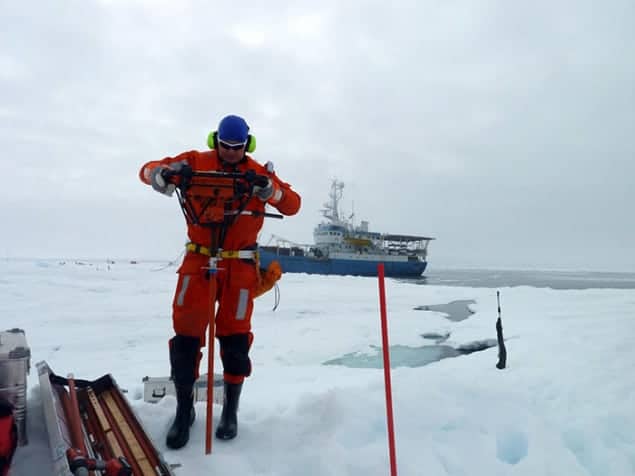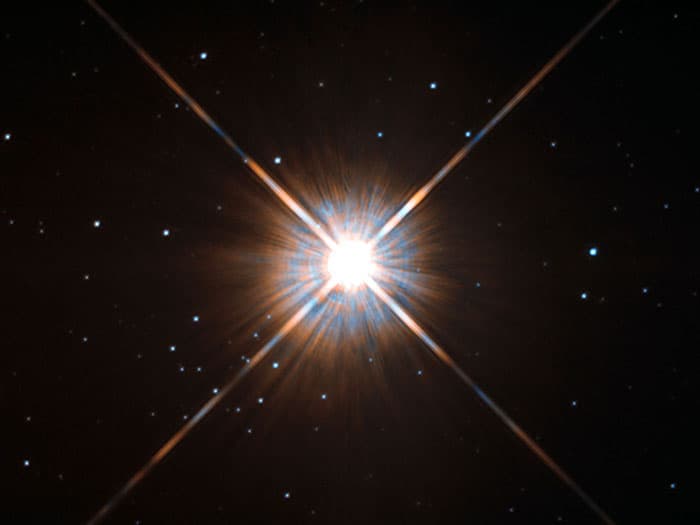Flash Physics is our daily pick of the latest need-to-know developments from the global physics community selected by Physics World‘s team of editors and reporters

Summer ice is stronger, say scientists
Sea-ice structures called “ice ridges” become stronger as the summer progresses, thanks to an influx of less salty water. That’s the conclusion of physicist Aleksey Shestov and colleagues at the University Centre in Svalbard, Norway, who have studied the ridges that form in the Arctic Ocean when ice floes slam together. These ridges extend both above and below the surrounding flat ice. The submerged portion of the ridge is a jumble of ice chunks with pockets of salty water that tend to form in the summer. These water pockets should weaken the ice ridge, but Shestov’s team has discovered that less-salty melt water that pools on the surface of the ice trickles down into the pockets and reduces the salinity of the water in the pockets. Water that contains less salt freezes at a higher temperature than sea water, and this allows the pockets to solidify and strengthen the ridge. “The ice ridge actually consolidates during the summer,” explains Shestov. “It’s still melting, but there is also freezing inside the ridge.” The research could inform how the hulls of ships and other marine structures are designed to withstand ice damage.
Project Blue plans to image our nearest exoplanet neighbour

A privately led, non-profit effort known as “Project Blue” plans on taking the first image of our nearest exoplanet neighbour – the recently discovered terrestrial planet that orbits Proxima Centauri, the closest star to Earth. The planet’s existence was confirmed this August and it lies within its star’s habitable zone. This means that the planet could sustain liquid water on its surface, and may even have an atmosphere. Project Blue aims at launching a state-of-the-art exoplanet-imaging telescope into space by 2019 and operating it until 2022. The project takes its name from the celebrated “Pale blue dot” image of Earth taken by the Voyager spacecraft in 1980. It is led by the BoldlyGo Institute, Mission Centaur, the SETI Institute and the University of Massachusetts Lowell. The mission is estimated to cost less than $50m.
French university launches degrees in English

One of France’s most prestigious universities – École Polytechnique – is to offer five new graduate degrees that will be taught exclusively in English. The courses, which begin this academic term, break away from traditionally being taught in French and are in energy environment, corporate strategy, metroeconomics, big data for business and “digitized society”. The institution is also launching a new Bachelor degree in mathematics – also taught exclusively in English – that will start in 2017 with applications opening in November. Students on the course, which will be École Polytechnique’s first undergraduate programme, will specialize in mathematics but will also study either computer science, physics or economics.
- You can find all our daily Flash Physics posts in the website’s news section, as well as on Twitter and Facebook using #FlashPhysics. Tune in to physicsworld.com later today to read today’s extensive news story on ultrasonic droplets.



